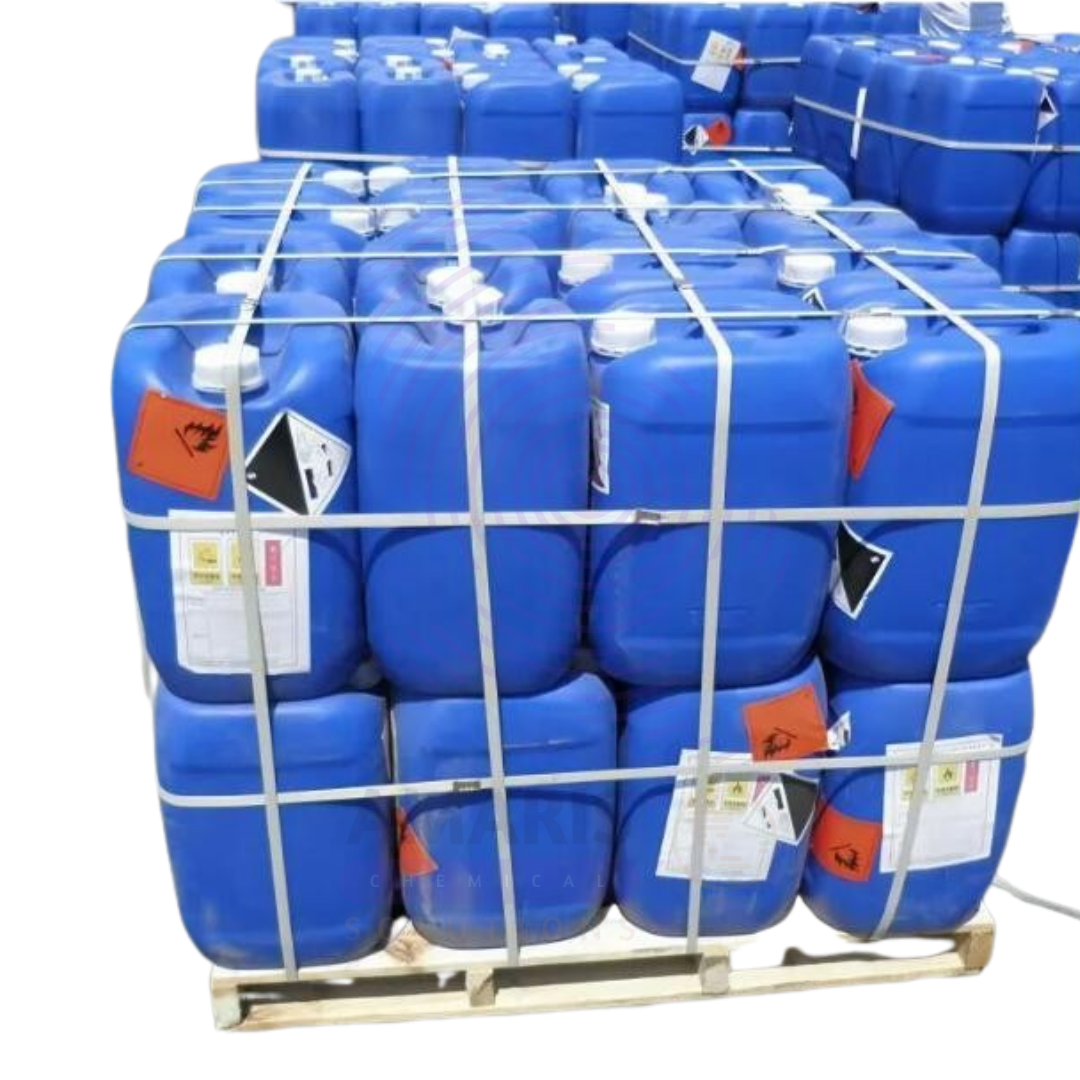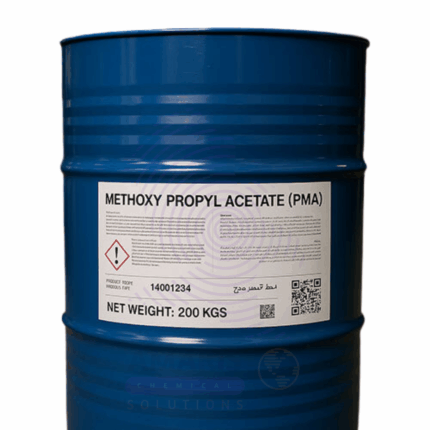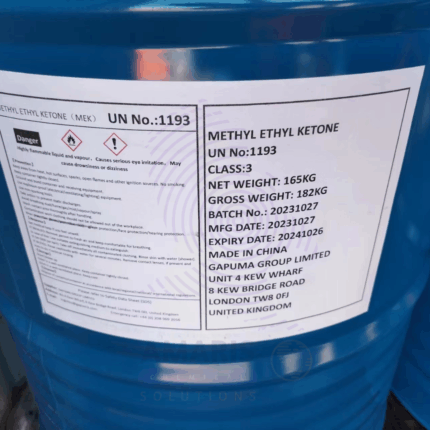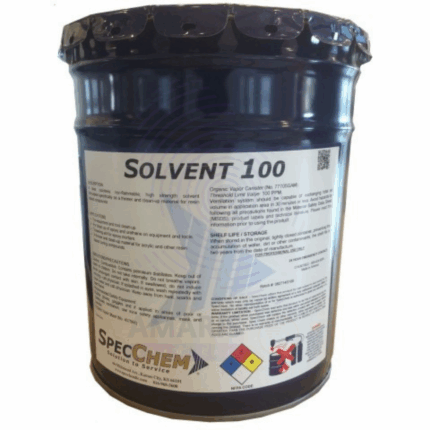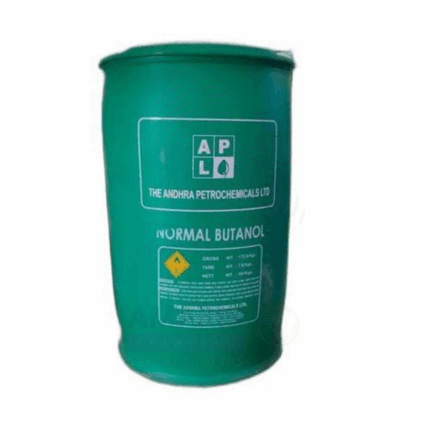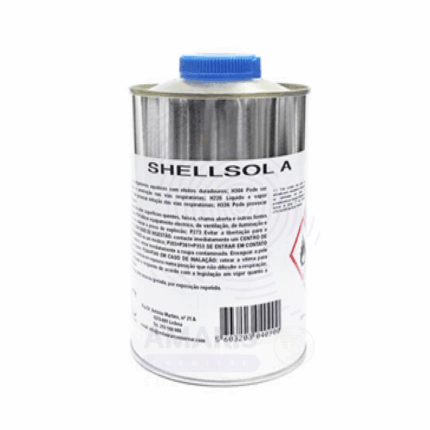Dimethyl Acetimide
Dimethyl Acetimide is a versatile organic compound used predominantly as a solvent and intermediate in chemical syntheses. It is a colorless to pale yellow liquid with good solvency properties for a wide range of organic substances. Known for its stability and relatively low toxicity compared to similar amides, Dimethyl Acetimide finds applications in pharmaceuticals, agrochemicals, and specialty chemical manufacturing. Its miscibility with water and many organic solvents makes it suitable for formulation and processing roles.
Dimethyl Acetimide
Primary Uses
Pharmaceutical Industry
- Used as a reaction medium and solvent in the synthesis of active pharmaceutical ingredients (APIs).
- Facilitates dissolution and extraction of various drug intermediates due to its polarity and solvent characteristics.
- Acts as a stabilizer and carrier solvent in formulations requiring moderate polarity and low volatility.Chemical Synthesis
- Serves as an intermediate in the production of dyes, pigments, and other specialty chemicals.
- Used as a solvent for polymerization processes and as a reagent in organic synthesis.
- Applied in acetylation reactions and as a catalyst medium in certain chemical transformations.Agrochemical Formulations
- Used as a solvent and carrier in the production and formulation of herbicides, insecticides, and fungicides.
- Improves the solubility and bioavailability of active ingredients in crop protection products.
Secondary Uses
Industrial Cleaning
- Utilized in specialized cleaning agents and degreasers for industrial equipment due to its solvent properties.Coatings & Paints
- Acts as a solvent and coalescing agent in coatings, paints, and varnishes to enhance drying and film formation.Laboratory Reagent
- Employed as a solvent and reagent in analytical chemistry and research laboratories.
- Basic Identification Attributes
- Chemical Name (IUPAC): N,N-Dimethylacetamide
- Common/Trade Name: Dimethyl Acetimide (often used interchangeably with N,N-Dimethylacetamide or DMAc)
- CAS Number: 127-19-5
- HS Code: 2924.19.90
- Molecular Formula: C4H9NO
- Synonyms:
- DMAc
- N,N-Dimethylacetamide
- Acetyl dimethylamide
- Dimethylacetamid
- Physical & Chemical Properties
- Physical State: Clear, colorless to pale yellow liquid
- Odor: Mild, amide-like odor
- Boiling Point: 164–166°C
- Melting Point: −20°C
- Density: ~0.937 g/cm³ at 20°C
- Solubility: Miscible with water, alcohols, ethers, and many organic solvents
- Stability: Stable under normal conditions; hygroscopic
- Safety & Hazard Attributes
- Hazard Class (GHS): Classified as hazardous; skin irritant and suspected reproductive toxin (Category 2)
- Toxicity: Moderate toxicity; potential for skin and respiratory irritation
- Exposure Limits: Occupational exposure limit typically around 10 ppm (ACGIH TLV)
- Storage & Handling Attributes
- Storage Conditions: Store in tightly sealed containers, in a cool, dry, well-ventilated area away from sources of ignition
- Container Type: Glass or steel drums, HDPE containers for smaller volumes
- Shelf Life: 1–2 years under proper storage
- Handling Precautions: Avoid inhalation, skin and eye contact; use appropriate PPE
- Regulatory & Compliance Attributes
- Listed on REACH, TSCA, and other global chemical inventories
- Controlled under chemical safety regulations due to potential reproductive toxicity
- Not approved as a food additive or pharmaceutical excipient
- Environmental & Health Impact
- Ecotoxicity: Harmful to aquatic life with long-lasting effects
- Persistence: Moderate environmental persistence
- Bioaccumulation: Low potential for bioaccumulation
Carcinogenicity/Mutagenicity: Not classified as carcinogenic; suspected reproductive toxin
Safety Handling Precautions
PPE Required:
- Chemical-resistant gloves (e.g., nitrile)
- Safety goggles or face shield
- Protective lab coat or apron
- Use respiratory protection if ventilation is inadequate
Handling Guidelines:
- Avoid inhalation of vapors and contact with skin and eyes
- Use in well-ventilated areas or fume hoods
- Prevent spills and minimize dust or mist formation
Storage Measures:
- Keep container tightly closed
- Store away from heat, flames, and incompatible materials such as strong oxidizers and acids
- Ensure secondary containment to prevent environmental release
Hygiene Practices:
- Wash hands thoroughly after handling
- Do not eat, drink, or smoke during use
- Remove contaminated clothing immediately
First Aid Measures
- Inhalation: Move to fresh air immediately; seek medical attention if symptoms such as dizziness or breathing difficulty occur
- Skin Contact: Wash affected area with soap and water; seek medical advice if irritation persists
- Eye Contact: Rinse eyes with plenty of water for at least 15 minutes; consult a physician if irritation occurs
- Ingestion: Do not induce vomiting; rinse mouth and seek immediate medical attention
Firefighting Measures
- Fire Hazards: Combustible liquid; emits toxic fumes under fire conditions
- Extinguishing Media: Use foam, dry chemical, CO₂, or water spray to extinguish fire
- Special Precautions: Firefighters should wear full protective gear and self-contained breathing apparatus (SCBA)
- Decomposition Products: Carbon monoxide, nitrogen oxides, and other toxic fumes


 Preservatives(food)
Preservatives(food) Flavor Enhancers
Flavor Enhancers Acidulants
Acidulants Sweeteners
Sweeteners Antioxidants
Antioxidants Colorants(food)
Colorants(food) Nutraceutical Ingredients (food)
Nutraceutical Ingredients (food) Nutrient Supplements
Nutrient Supplements Emulsifiers
Emulsifiers
 Collectors
Collectors Dust Suppressants
Dust Suppressants Explosives and Blasting Agents
Explosives and Blasting Agents Flocculants and Coagulants
Flocculants and Coagulants Frothers
Frothers Leaching Agents
Leaching Agents pH Modifiers
pH Modifiers Precious Metal Extraction Agents
Precious Metal Extraction Agents
 Antioxidants(plastic)
Antioxidants(plastic) Colorants (Pigments, Dyes)
Colorants (Pigments, Dyes) Fillers and Reinforcements
Fillers and Reinforcements Flame Retardants
Flame Retardants Monomers
Monomers Plasticizers
Plasticizers Polymerization Initiators
Polymerization Initiators Stabilizers (UV, Heat)
Stabilizers (UV, Heat)
 Antifoaming Agents
Antifoaming Agents Chelating Agents
Chelating Agents Coagulants and Flocculants
Coagulants and Flocculants Corrosion Inhibitors
Corrosion Inhibitors Disinfectants and Biocides
Disinfectants and Biocides Oxidizing Agents
Oxidizing Agents pH Adjusters
pH Adjusters Scale Inhibitors( water)
Scale Inhibitors( water)
 Antioxidants(cosmetic)
Antioxidants(cosmetic) Emollients
Emollients Fragrances and Essential Oils
Fragrances and Essential Oils Humectants
Humectants Preservatives
Preservatives Surfactants(cosmetic)
Surfactants(cosmetic) Thickeners
Thickeners UV Filters
UV Filters
 Fertilizers
Fertilizers Soil Conditioners
Soil Conditioners Plant Growth Regulators
Plant Growth Regulators Animal Feed Additives
Animal Feed Additives Biostimulants
Biostimulants Pesticides (Herbicides, Insecticides, Fungicides)
Pesticides (Herbicides, Insecticides, Fungicides)
 Active Pharmaceutical Ingredients (APIs)
Active Pharmaceutical Ingredients (APIs) Excipients
Excipients Solvents(pharmaceutical)
Solvents(pharmaceutical) Antibiotics
Antibiotics Antiseptics and Disinfectants
Antiseptics and Disinfectants Vaccine Adjuvants
Vaccine Adjuvants Nutraceutical Ingredients (pharmaceutical)
Nutraceutical Ingredients (pharmaceutical) Analgesics & Antipyretics
Analgesics & Antipyretics
 Analytical Reagents
Analytical Reagents Solvents(lab)
Solvents(lab) Chromatography Chemicals
Chromatography Chemicals Spectroscopy Reagents
Spectroscopy Reagents microbiology-and-cell-culture-reagents
microbiology-and-cell-culture-reagents Molecular Biology Reagents
Molecular Biology Reagents Biochemical Reagents
Biochemical Reagents Inorganic and Organic Standards
Inorganic and Organic Standards Laboratory Safety Chemicals
Laboratory Safety Chemicals Specialty Laboratory Chemicals(Special Laboratory Equipment)
Specialty Laboratory Chemicals(Special Laboratory Equipment)
 Demulsifiers
Demulsifiers Hydraulic Fracturing Fluids
Hydraulic Fracturing Fluids Scale Inhibitors(oil)
Scale Inhibitors(oil) Surfactants(oil)
Surfactants(oil) Drilling Fluids
Drilling Fluids
 Dyes and Pigments
Dyes and Pigments Bleaching Agents
Bleaching Agents Softening Agents
Softening Agents Finishing Agents
Finishing Agents Antistatic Agents
Antistatic Agents
 Admixtures
Admixtures Waterproofing Agents
Waterproofing Agents Sealants and Adhesives
Sealants and Adhesives Curing Compounds
Curing Compounds Concrete Repair Chemicals
Concrete Repair Chemicals Anti-Corrosion Coatings
Anti-Corrosion Coatings
 Surfactants(cleaning)
Surfactants(cleaning) Builders
Builders Enzymes
Enzymes Solvents (Cleaning)
Solvents (Cleaning) Fragrances
Fragrances
 Electronic Chemicals
Electronic Chemicals Catalysts
Catalysts Lubricants
Lubricants Photographic Chemicals
Photographic Chemicals Refrigerants
Refrigerants Automotive chemicals
Automotive chemicals Pyrotechnic Chemicals
Pyrotechnic Chemicals
 Biodegradable Surfactants
Biodegradable Surfactants Bio-based Solvents
Bio-based Solvents Renewable Polymers
Renewable Polymers Carbon Capture Chemicals
Carbon Capture Chemicals Wastewater Treatment Chemicals
Wastewater Treatment Chemicals
 Pigments
Pigments Solvents(paint)
Solvents(paint) Specialty Coatings
Specialty Coatings Binders/Resins
Binders/Resins Additives
Additives Driers
Driers Anti-Corrosion Agents
Anti-Corrosion Agents Functional Coatings
Functional Coatings Application-Specific Coatings
Application-Specific Coatings
 Fresh Herbs
Fresh Herbs Ground Spices
Ground Spices Whole Spices
Whole Spices Spice Blends
Spice Blends Dried Herbs
Dried Herbs
 Leavening Agents
Leavening Agents Dough Conditioners
Dough Conditioners Flour Treatments
Flour Treatments Fat Replacers
Fat Replacers Decoratives
Decoratives Preservatives(baking)
Preservatives(baking)
 Plasticizers & Softeners
Plasticizers & Softeners Reinforcing Agents
Reinforcing Agents Adhesion Promoters
Adhesion Promoters Vulcanizing Agents
Vulcanizing Agents Antidegradants
Antidegradants Blowing Agents
Blowing Agents Fillers & Extenders
Fillers & Extenders Accelerators & Retarders
Accelerators & Retarders